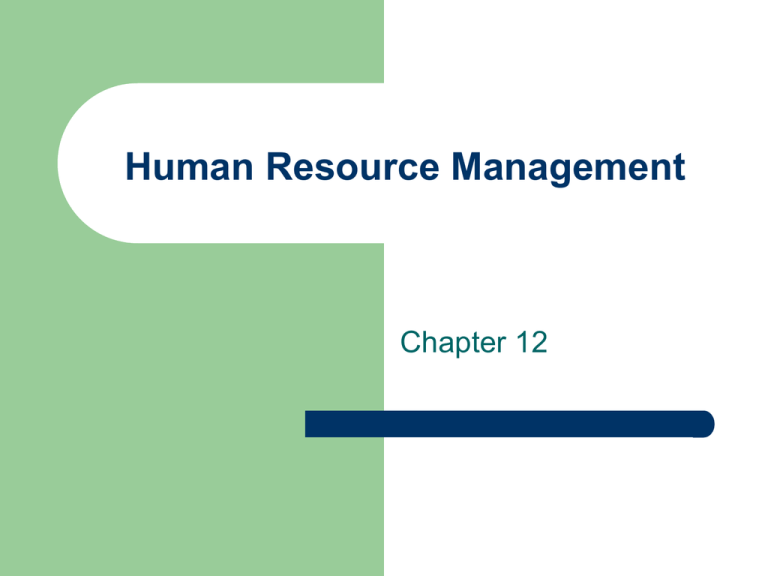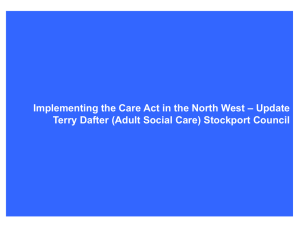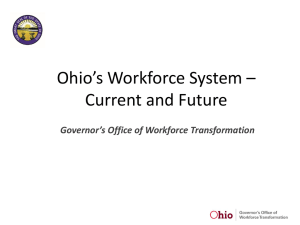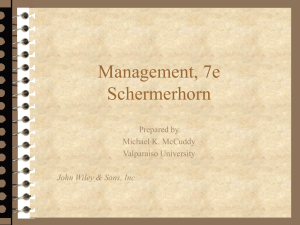
Human Resource Management
Chapter 12
Definition of Human Resources Management
The process of attracting, developing and
maintaining a quality workforce that supports
an organization’s mission, objectives and
strategies.
Human Resources involves:
Attracting the right people to the organization
in order to find the best person for the job.
Developing effective workers who will perform
to the best of their abilities through training,
assessing and guidance.
Maintaining a quality workforce by providing
employees with what they want in order for
them to be satisfied and happy.
LEGAL FRAMEWORK IN HR
Employment Equity: Treating all employees fairly
regardless of sex, race, religion, age national origin
or colour.
A legal and emotional issue
Intentional discrimination is illegal
There is said to be four designated group who do
not receive equitable treatment in employment:
women, visible minorities, Aboriginal people,
persons with disabilities
LEGAL FRAMEWORK IN HR
Discrimination: when someone is denied a job or a
job assignment for reasons not to be job relevant
You cannot be denied a job if you are too short, too
tall, overweight, over 50 or if you have orange hair
If there is a justifiable reason for someone not to
get hired, then it is perfectly legal. BONA FIDE
OCCUPATIONAL QUALIFICATIONS are justifiable
reasons for discrimination based on business
reason of safety and effectiveness.
Canadian Human Rights Act
Deals with complaints concerning discrimination
The Canadian Human Rights Commission (CHRC)
will take action if they feel there is sufficient
grounds of discrimination
Individuals have a right to issue a complaint if they
feel they have been discriminated against
The CHRC may refuse to accept a complaint if it
has not been filed within a certain period of time, it
is believed to be minor, or if it was filed in bad faith.
Sexual Harassment
Occurs as behaviour of a sexual nature that affects
a person’s employment in the working environment
which includes:
–
–
–
unwelcome advances
requests for sexual favour
verbal or physical conduct
Organizations must have a sexual harassment
policy in place with the proper steps to take if a
worker experiences sexual harassment
Sexual Harassment
Examples of sexual harassment
http://www.youtube.com/watch?v=LBRAnQ8v
zmo&feature=related
http://www.youtube.com/watch?v=bojKifKPkP
k&feature=related
http://www.youtube.com/watch?v=3b7QwYQR
iqw&feature=related
How do organizations attract a quality
workforce?
Recruitment
9
–
Activities designed to attract a qualified pool of job
applicants to an organization.
–
Steps in the recruitment process:
Advertisement of a job vacancy.
Preliminary contact with potential job candidates.
Initial screening to create a pool of qualified applicants.
Schermerhorn -- Chapter 12
How do organizations attract a quality
workforce?
Recruitment methods
– External recruitment—candidates are sought from
outside the hiring organization.
– Internal recruitment—candidates are sought from
within the organization.
10
Schermerhorn -- Chapter 12
How do organizations attract a quality
workforce?
Selection
–
Choosing from a pool of applicants the person or persons who
offer greatest performance potential.
Selection Steps
–
–
–
–
–
–
Completion of a formal application form
Interviewing
Testing
Reference checks
Physical examination
Final analysis and decision to hire or reject
How do organizations attract a quality
workforce?
Step 1—application forms
–
Declares individual to be a job candidate.
–
Documents applicant’s personal history and
qualifications.
–
Personal résumés may be included.
–
Applicants lacking appropriate credentials are
rejected at this step.
How do organizations attract a quality
workforce?
Step 2—interviews
–
–
Exchange of information between job candidate and key
members of the organization.
Guidelines for conducting interviews:
Plan ahead.
Create a good interview climate.
Conduct a goal-oriented interview.
Avoid questions that may imply discrimination.
Answer the questions asked of you … and others that may not be
asked.
Take notes.
How do organizations attract a quality
workforce?
Step 3—employment tests
– Used to further screen applicants by gathering
additional job-relevant information.
– Common types of employment tests:
Intelligence
Aptitudes
Personality
Interests
How do organizations attract a quality
workforce?
Step 3—employment tests
–
Assessment center
–
Evaluates a person’s potential by observing his/her
performance in simulated work situations.
Work sampling
Evaluates a person’s performance on a set of tasks that
replicate those required in the job under consideration.
How do organizations attract a quality
workforce?
Step 4—reference and background checks
– Inquiries to previous employers, academic advisors,
coworkers and/or acquaintances regarding:
–
Qualifications
Experience
Past work records
Provides information that cannot be discovered
elsewhere in selection process.
How do organizations attract a quality
workforce?
Step 5—physical examinations
–
Ensure applicant’s physical capability to fulfill job
requirements.
–
Basis for enrolling applicant in life, health, and
disability insurance programs.
–
Drug testing is done at this step.
How do organizations attract a quality
workforce?
Step 6—final decision to hire or reject
–
Best selection decisions will involve extensive
consultation among multiple parties.
–
Selection decision should focus on all aspects of the
candidate’s capacity to perform the designated job.
How do organizations develop a quality
workforce?
Socialization
– Process of influencing the expectations, behavior,
and attitudes of a new employee in a way
considered desirable by the organization.
Orientation
– Set of activities designed to familiarize new
employees with their jobs, coworkers, and key
aspects of the organization.
19
Schermerhorn -- Chapter 12
How do organizations develop a quality
workforce?
Training
–
A set of activities that
provides the opportunity to
acquire and improve jobrelated skills.
On-the-job training
–
–
–
–
Job rotation
Coaching
Mentoring
Modeling
Off-the-job training
–
Management
development
How do organizations develop a quality
workforce?
Performance management systems ensure
that—
–
Performance standards and objectives are set.
–
Performance results are assessed regularly.
–
Actions are taken to improve future performance
potential.
21
Schermerhorn -- Chapter 12
How do organizations develop a quality
workforce?
Performance appraisal
22
–
Formally assessing someone’s work
accomplishments and providing feedback.
–
Purposes of performance appraisal:
Evaluation—let people know where they stand relative to
objectives and standards.
Development—assist in training and continued personal
development of people.
Schermerhorn -- Chapter 12








